Private Technical Training
Technical diving goes beyond recreational scuba diving limits. Many divers will tell you that technical diving is all about the adventure and the challenge it involves exploring places that no one else has ever seen.
We are members of TDI (Technical Diving International) and we practice the highest safety standards in diving industry. Years of diving and teaching cave, technical and CCR, give us the experience to offer you the knowledge and skills for a great and safe training experience.
Tec diving is definitely not for everyone, but it does attract experienced divers who want to go beyond their current limits and are willing to accept the added risks, training, investment and commitment it demands. If you think this is for you, then Technical Diving courses are your ticket to discover new, unexplored places.
During most technical dives the surface is often inaccessible in case of an emergency, therefore, divers use extensive procedures, equipment and training to manage the added risks and potential hazards. Although founded on extensive open-circuit scuba technology, tec diving has been revolutionized by the development, availability and reliability of closed circuit re-breathers (CCRs) which have numerous benefits and provide divers with significantly more time underwater.
Knowledge is Essential, Survival is Practical
– Tom Mount
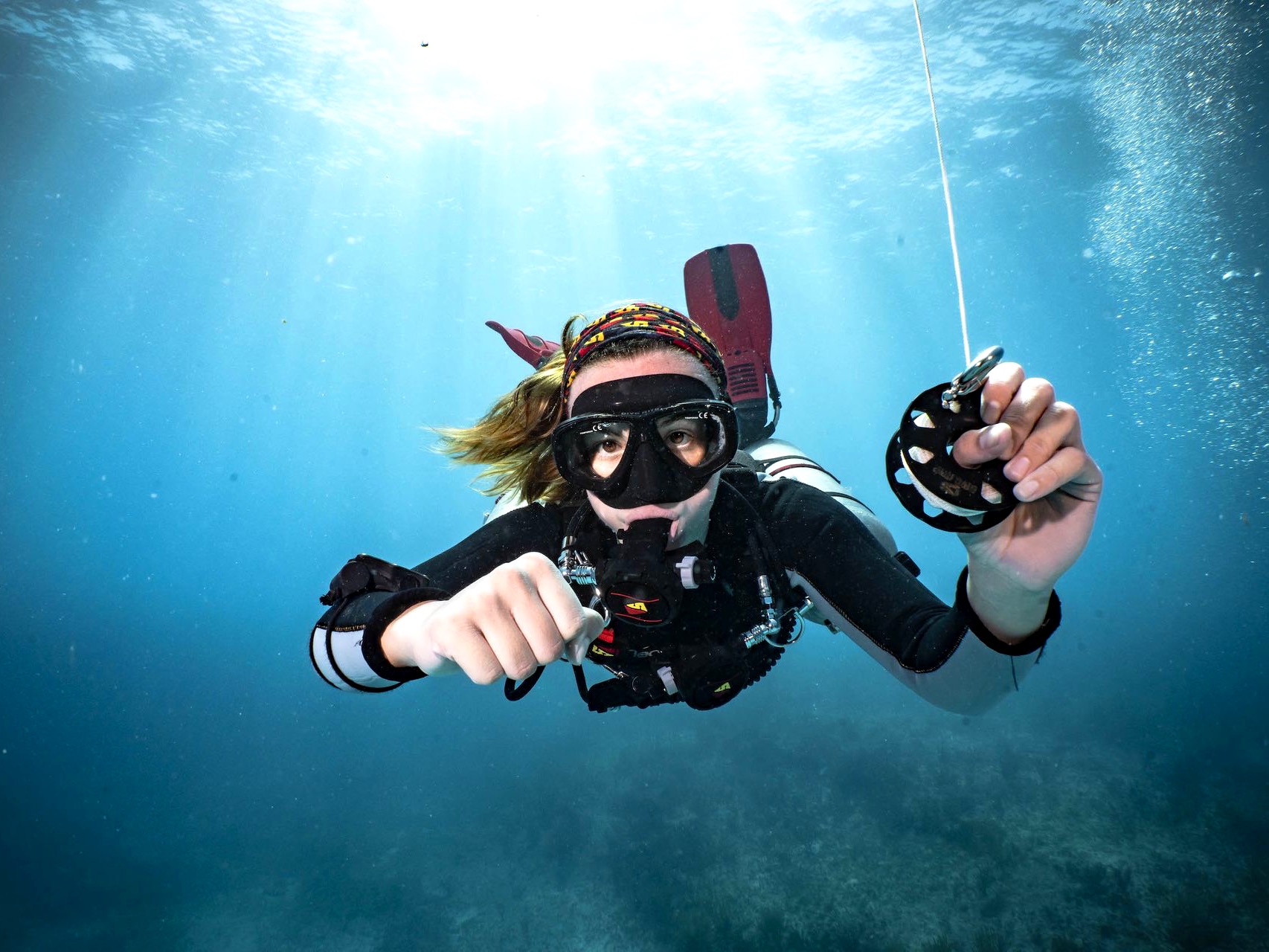
Open Water Sidemount
This course is designed to teach certified divers how to safely utilize side-mounted primary cylinders as an alternative to the traditional back-mounted configuration.
Duration: 1 - 2 days.
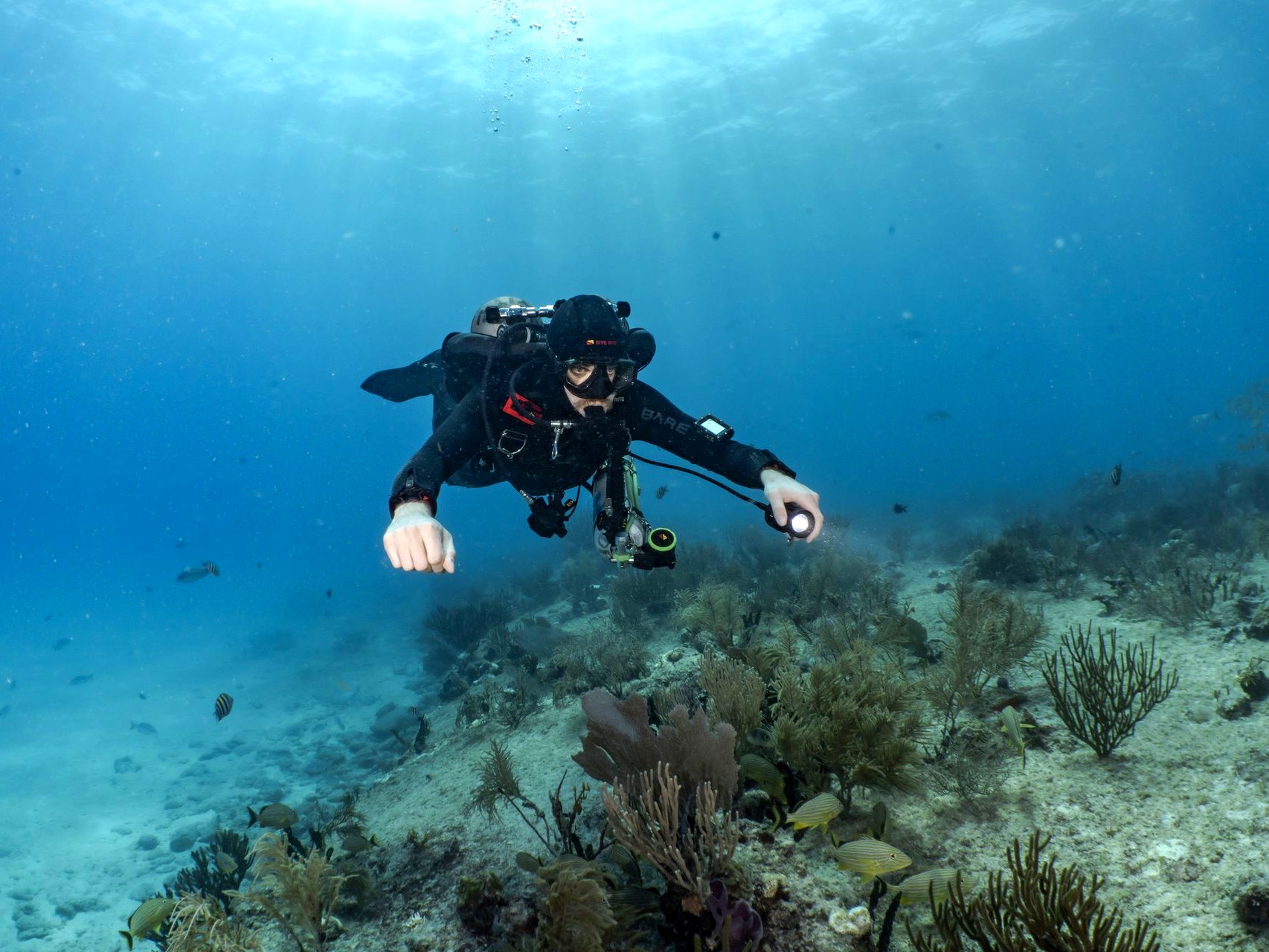
Intro to Tech
The TDI Intro to Tech course introduces students to the world of technical diving. This course is designed as an introductory course to the TDI Advanced Nitrox course and the TDI Decompression Procedures Course.
Duration: 2 - 3 days
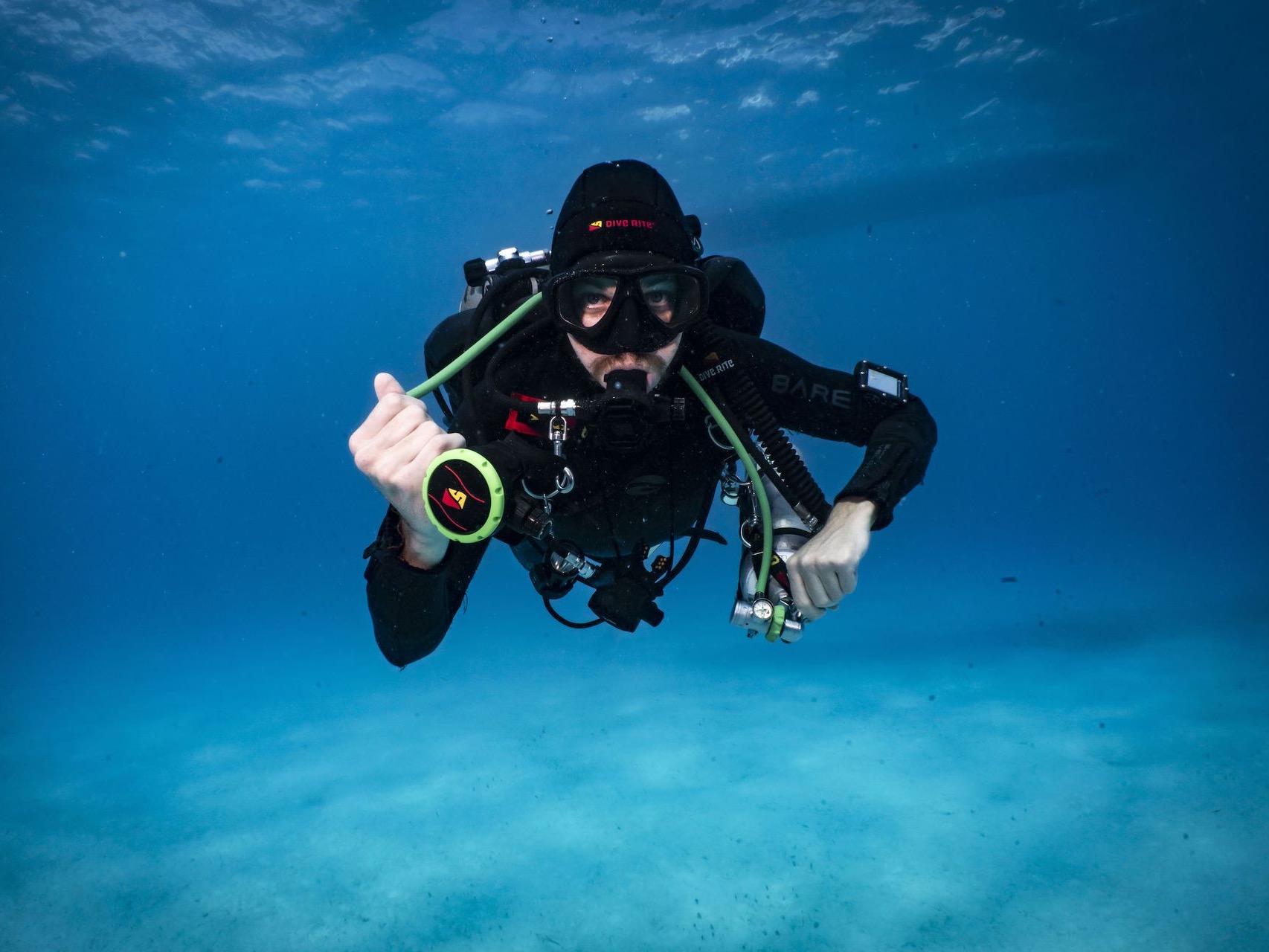
Advanced Nitrox
This course examines the use of EAN-21 through 100 percent oxygen for optimal mixes to a depth of 40 meters / 130 feet.
Duration: 3 - 4 days.
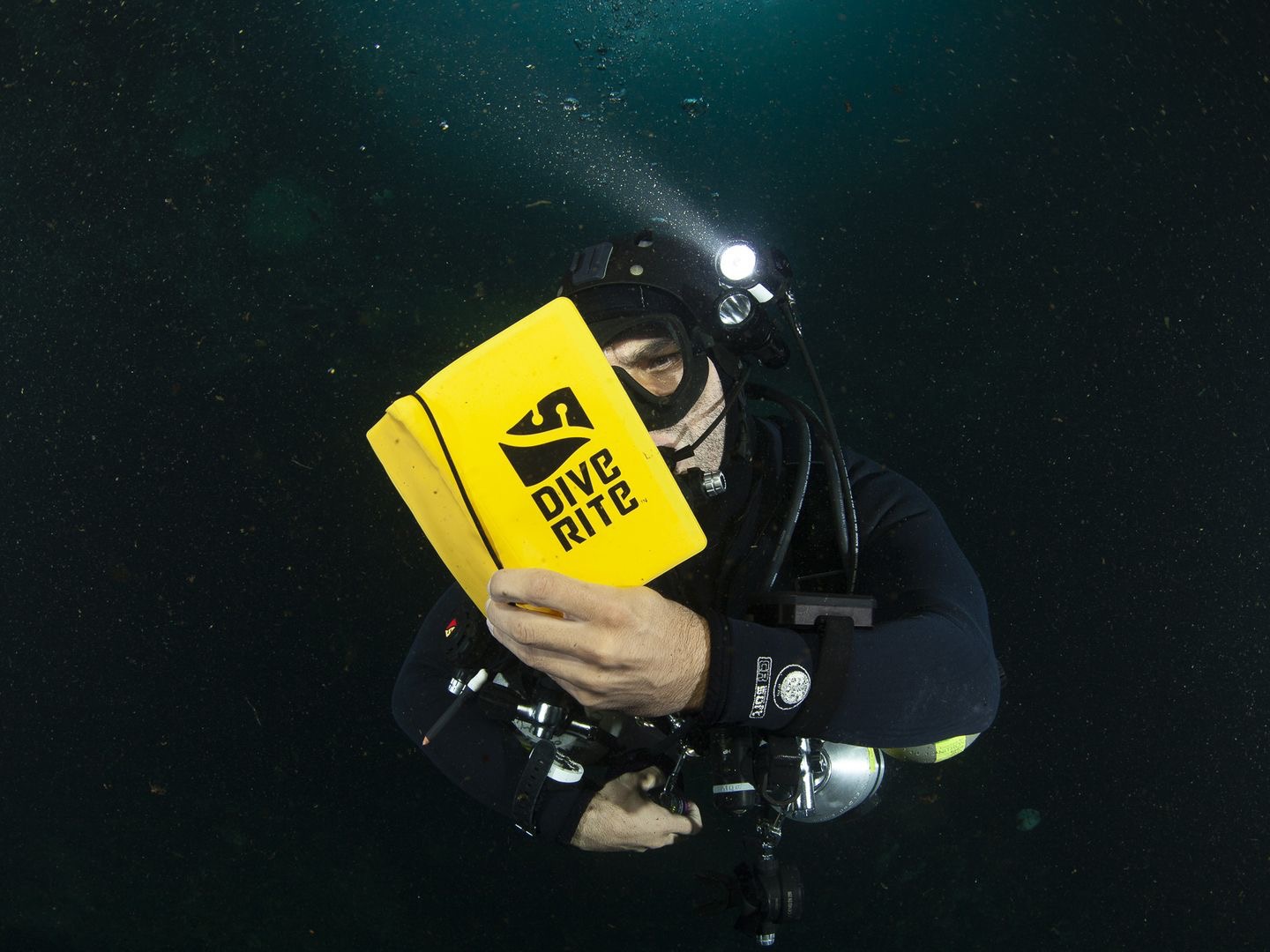
Deco Procedures
This course examines the theory, methods and procedures of planned stage decompression diving.
Duration: 3 - 4 days.
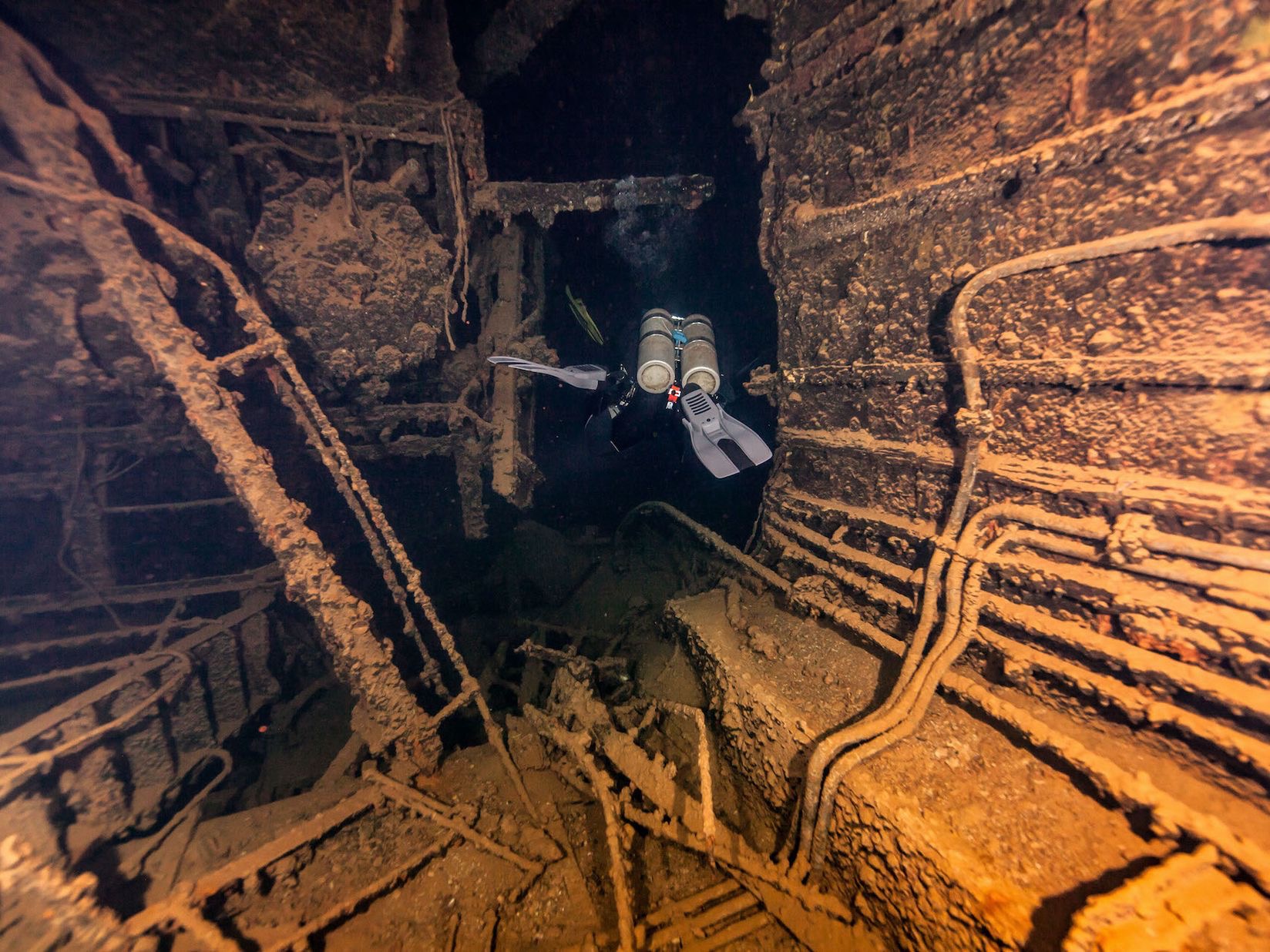
Helitrox
The Helitrox course examines the theory, methods and procedures for planned stage decompression diving utilizing Helium in the breathing mixture.
Duration: 3 - 4 days.

Open Water DPV Diver
The purpose of the TDI Diver Propulsion Vehicle (DPV) course is to familiarize divers with the skills, knowledge, planning, organization, procedures, techniques, problems, and hazards of using DPVS.
Duration: 3 - 4 days.
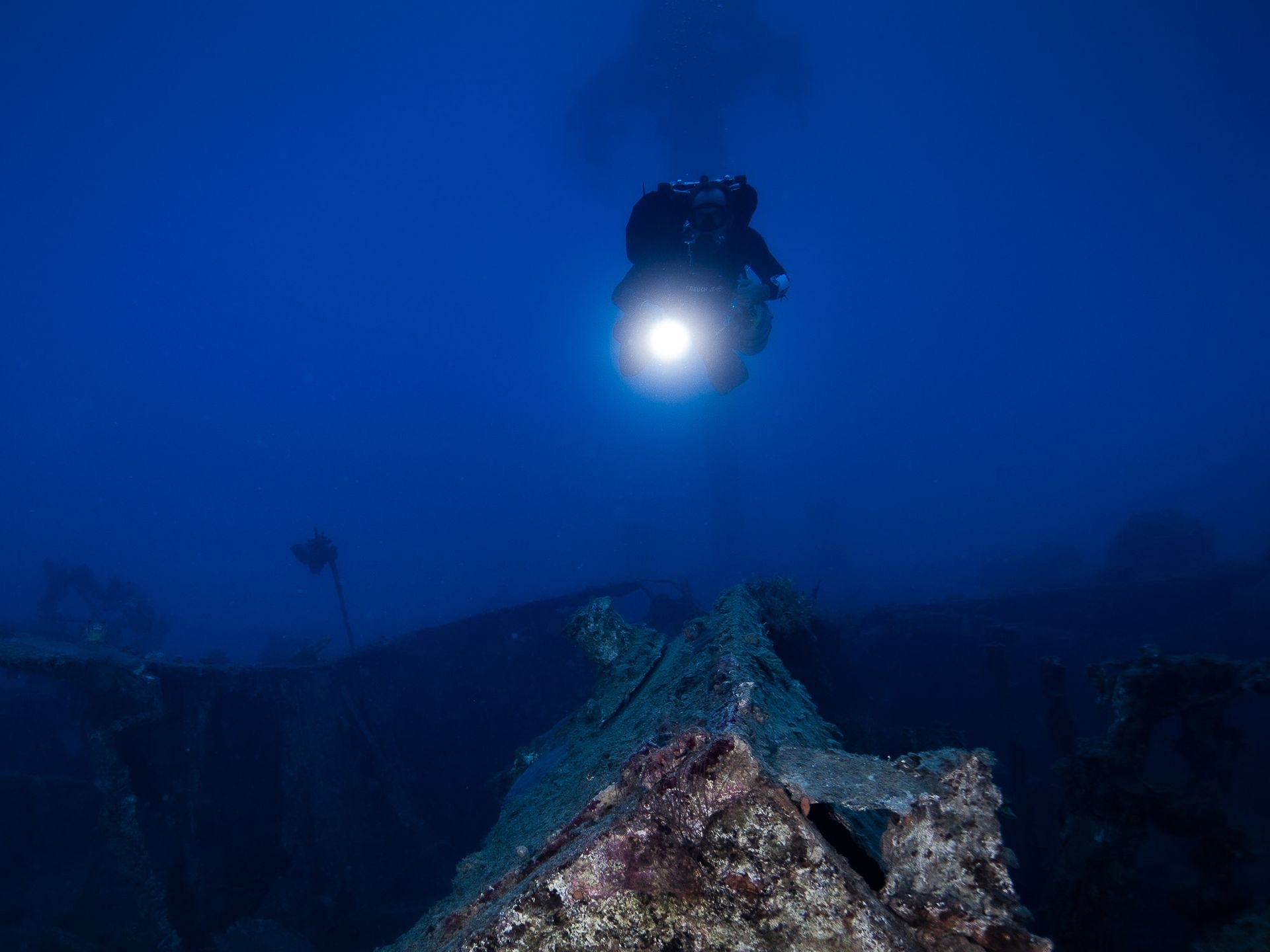
Trimix Diver
The TDI Trimix course provides the training required to competently and safely utilize breathing gases containing helium for dives that require staged decompression, utilizing nitrox and / or oxygen mixtures during decompression to a maximum depth of 60 metres / 200 feet.
Duration: 3 - 4 days.

Advanced Trimix Diver
The TDI Advanced Trimix course provides the training required to competently and safely utilize breathing gases containing helium for dives that require staged decompression, utilizing nitrox and / or oxygen (O₂) mixtures during decompression to a maximum depth of 100 metres / 330 feet.
Duration: 3 - 4 days.
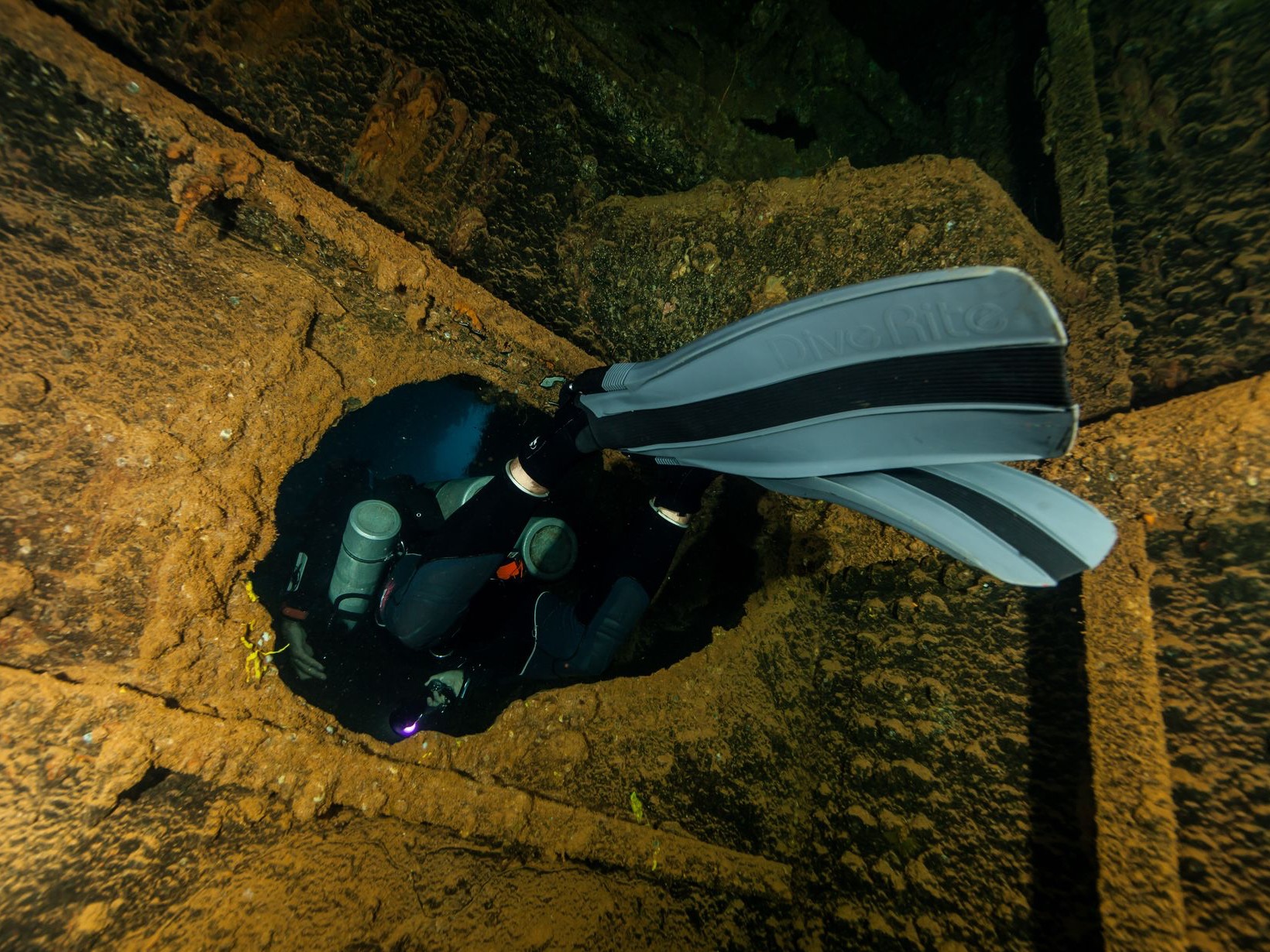
Tec Trimix Diver
Ready for the outer edge of technical diving? The Tec Trimix Diver course takes experienced tec divers and turns them into extreme divers who go deeper and visit pristine sites where few others will ever go. During the course, you'll make dives as deep as 90 metres/300 feet, but once you earn this tough certification, there are few limits.
Duration: 3 - 4 days.
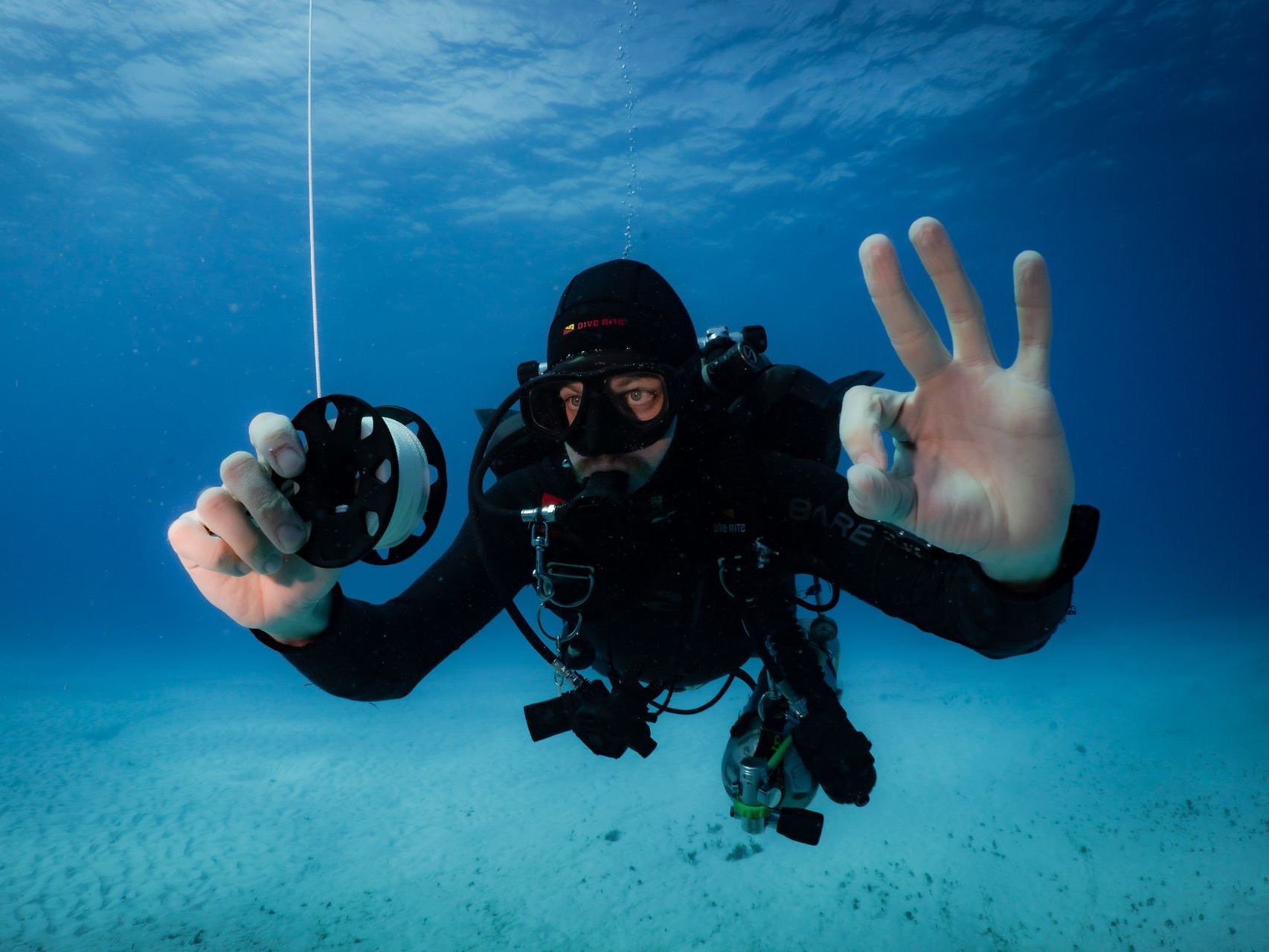
Tec 40
The PADI Tec 40 course is where you transition from recreational scuba diving to technical diving. It's a great place to start because it's the first subdivision of the full PADI Tec Diver course and bridges the gap between no stop diving and full technical deep decompression diving.
Duration: 3 - 4 days.

Tec 45
The PADI Tec 45 course is the second part of the full PADI Tec Deep Diver program. You'll extend your depth limit to 45 metres/145 feet and learn to plan and execute repetitive decompression dives using a single stage/decompression cylinder.
Duration: 3 - 4 days.
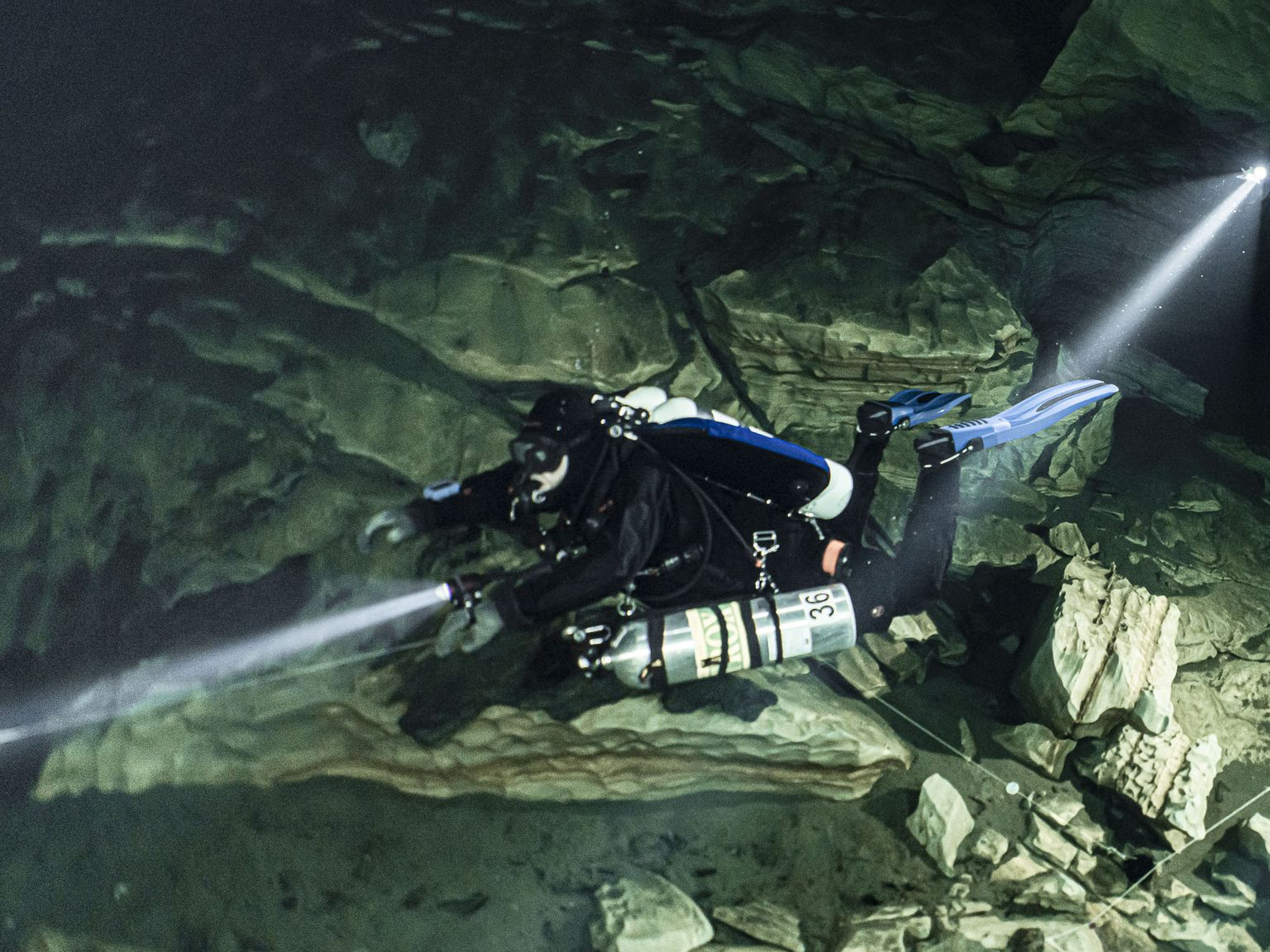
Tec 50
The third part of the full PADI Tec Deep Diver program is Tec 50. As a Tec 50 diver, you show that you've developed competency as a tec diver and have the skills to dive to a maximum of 50 metres/165 feet.
Duration: 3 - 4 days.
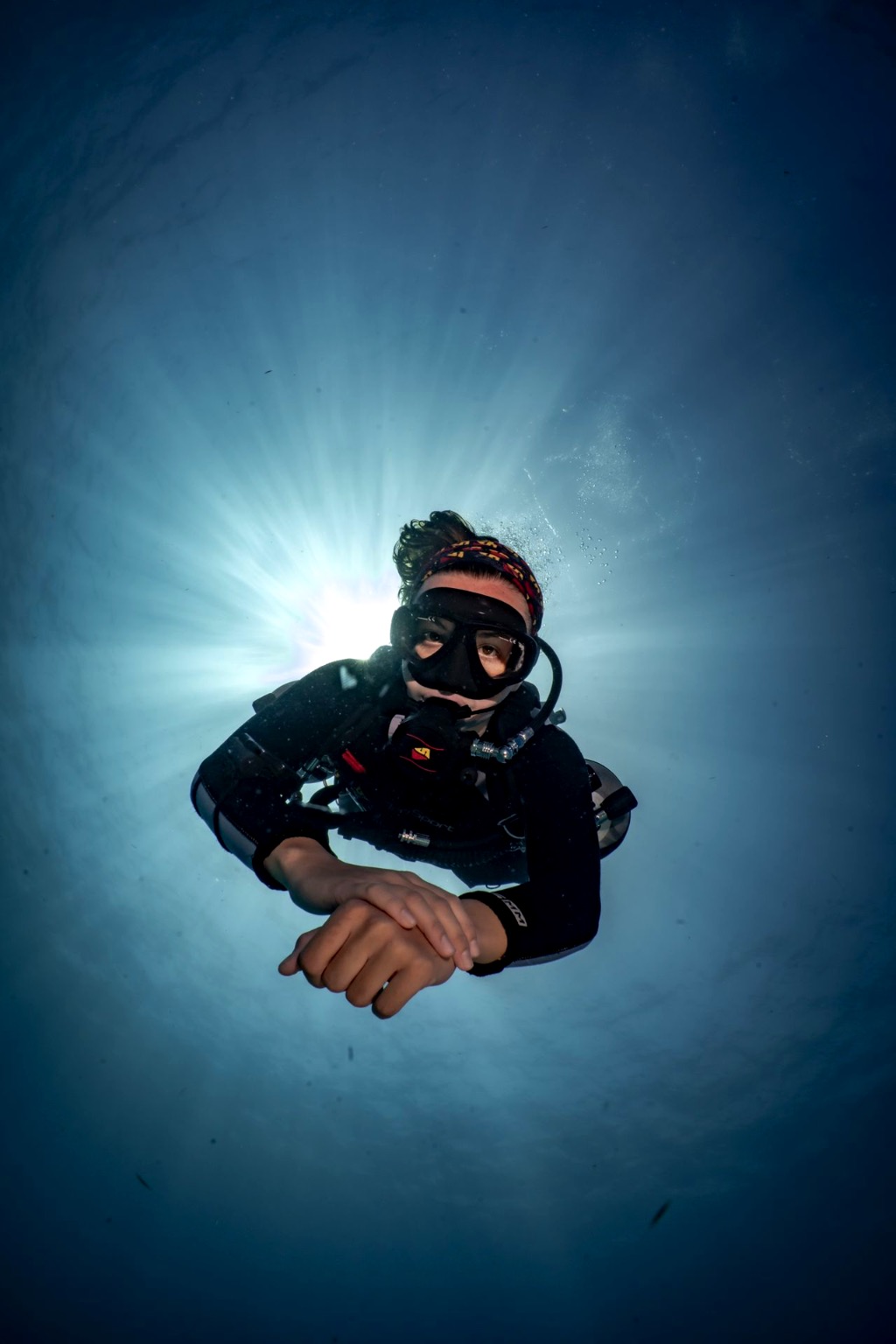
Open Water Sidemount
This course is designed to teach certified divers how to safely utilize side-mounted primary cylinders as an alternative to the traditional back-mounted configuration. This course can be combined with other TDI courses such as: Decompression Procedures, Extended Range, Trimix, Advanced Trimix and Advanced Wreck. If combined, the standards for both courses must be met..
Included throughout the course:
- Private instructor.
- Classroom sessions.
- Transport to the cenotes or boat from the shop.
- Tanks and weights.
- EAN 32 fills.
- Certification card.
- Water and snacks.
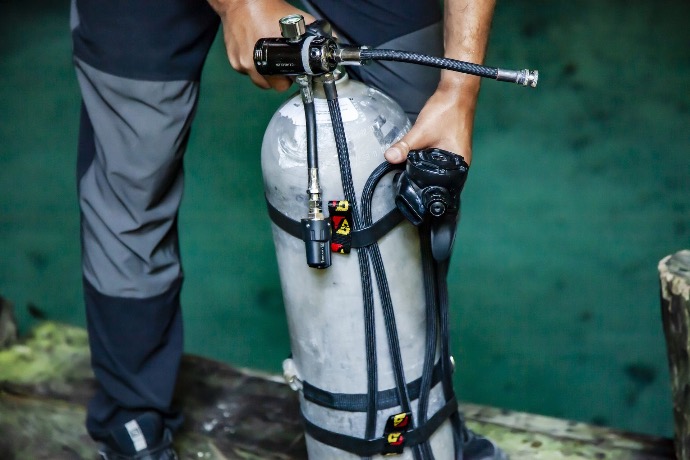
Topics
- Gas matching procedures to include dissimilar volumes.
- Gas management utilizing independent cylinders.
- Psychological considerations
- Equipment considerations.
- Proper communication.
- Problem solving.
- Gas-sharing.
- Gas hemorrhages.
- Light failure.
- Loss of visibility.
- Entanglement.
- Self rescue. - Tight spaces.
- Conservation.
- Difficult water entries.
- S-Drills; specific to sidemount.

Pre-dive drills
- Use START before every dive *START is an acronym for S-drill (Out of Gas drill and Bubble Check), Team (buddy equipment checks), Air (gas matching), Route (entry/exit and planned path underwater, Tables (depth, duration, waypoints and schedule).
- Stress analysis and mitigation.
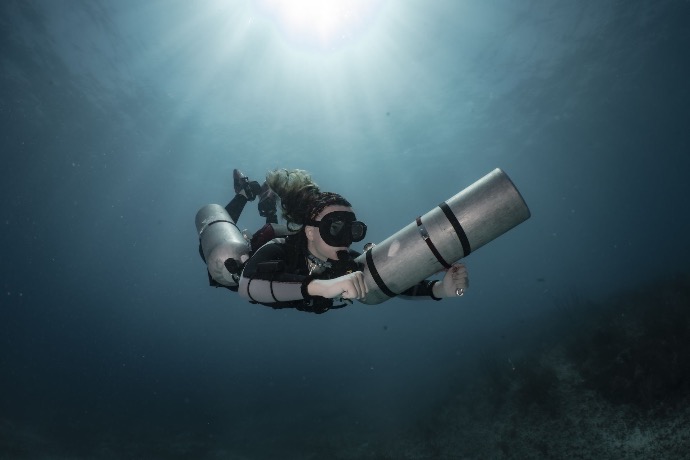
Water skills
- Demonstrate various propulsion techniques: frog kick, modified frog kick, modified flutter kick, backwards kick, helicopter turns, and hand pulling if appropriate for the environment.
- Demonstrate adequate buoyancy control; ability to hover at fixed position in water column without moving hands or feet.
- Demonstrate adequate trim; ability to maintain proper position during the descent, bottom and ascent portion of the dive.
- Demonstrate the ability to perform the following exercises while maintaining trim and buoyancy in the water column:
- Unclipping and attaching sidemount cylinders.
- Perform gas switches with and without a mask.
$6,550
MXN
*Price per person
*Price per training day

Intro to Tech
The TDI Intro to Tech course introduces students to the world of technical diving. This course is designed as an introductory course to the TDI Advanced Nitrox course and the TDI Decompression Procedures Course. The objective of this course is to familiarize students with technical equipment configurations, to enhance open water diving skills (such as buoyancy, trim, and situational awareness), and to introduce students to advanced gas planning techniques within a no-decompression context.
This course is strictly a no-decompression course; students are permitted to use enriched air nitrox (EAN) mixes, provided the gas mix is within their current level of certification. Intro to Tech may be combined with TDI Advanced Nitrox at the discretion of the instructor.
Included throughout the course:
- Private instructor.
- Classroom sessions.
- Transport to the cenotes or boat from the shop.
- Tanks and weights.
- EAN 32 fills.
- Certification card.
- Water and snacks.
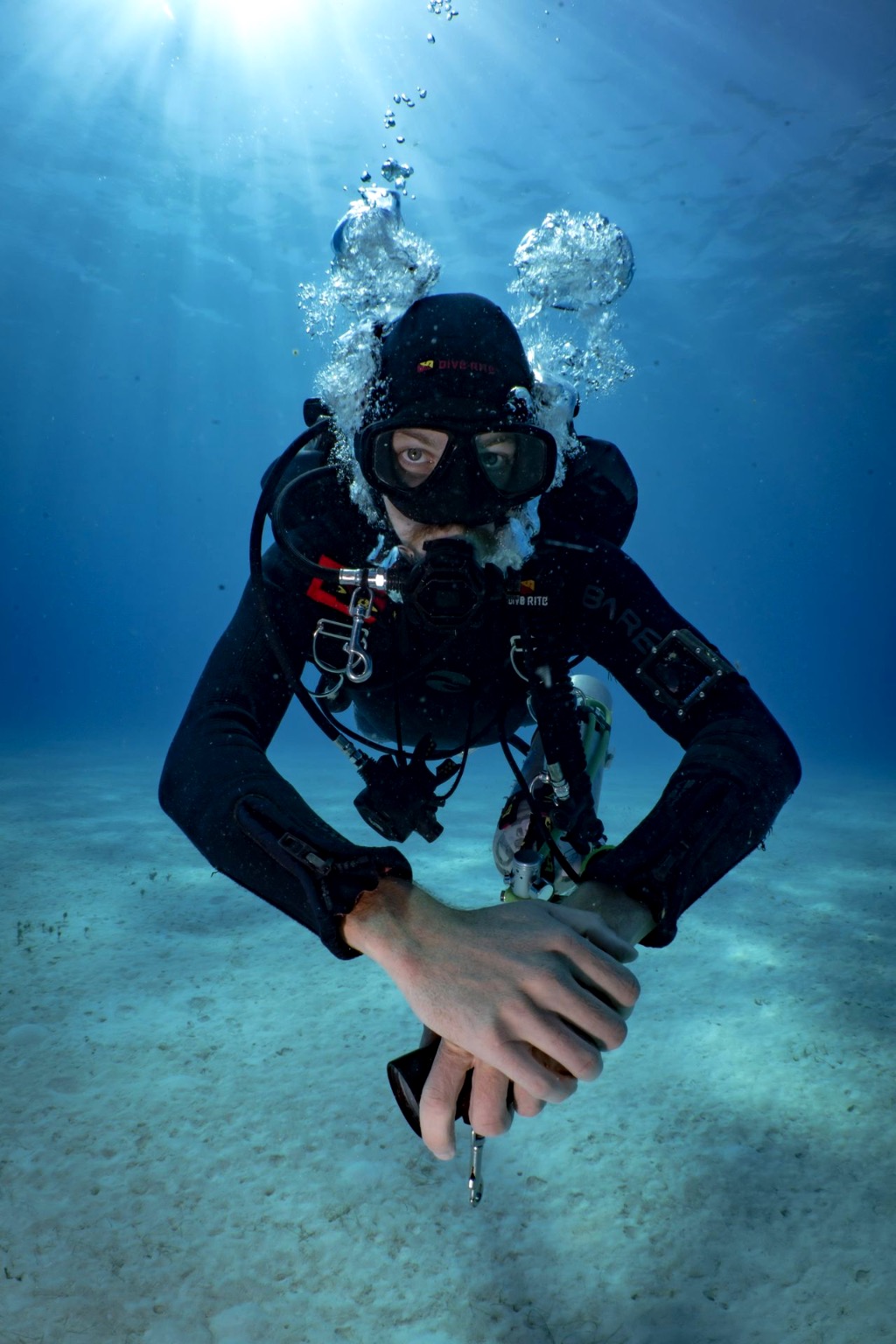
Topics
- Physics.
- Pressure review - Physiology.
- Ascent/descent rates
- Hyperthermia.
- Hypothermia.
- Psychological aspects - Equipment Considerations.
- Single/double cylinder(s); valve options.
- Regulator options.
- Harness/BCD options.
- Computer, bottom timer, depth gauge options.
- Reels/spools options.
- Lift bag/surface marker bag options.
- Exposure protection options.
- Minimum equipment, bring only what is needed.
- Streamlining and stowing equipment - Dive Planning.
- Tables/computer dive planning and execution.
- Surface air consumption (SAC) rate calculations.
- Minimum gas reserve calculations for no-decompression dives.
- Environmental considerations. - Procedures.
- Entry/exit strategies.
- Emergency strategies in case of gas failure/loss.
- Ascent/descent strategies.
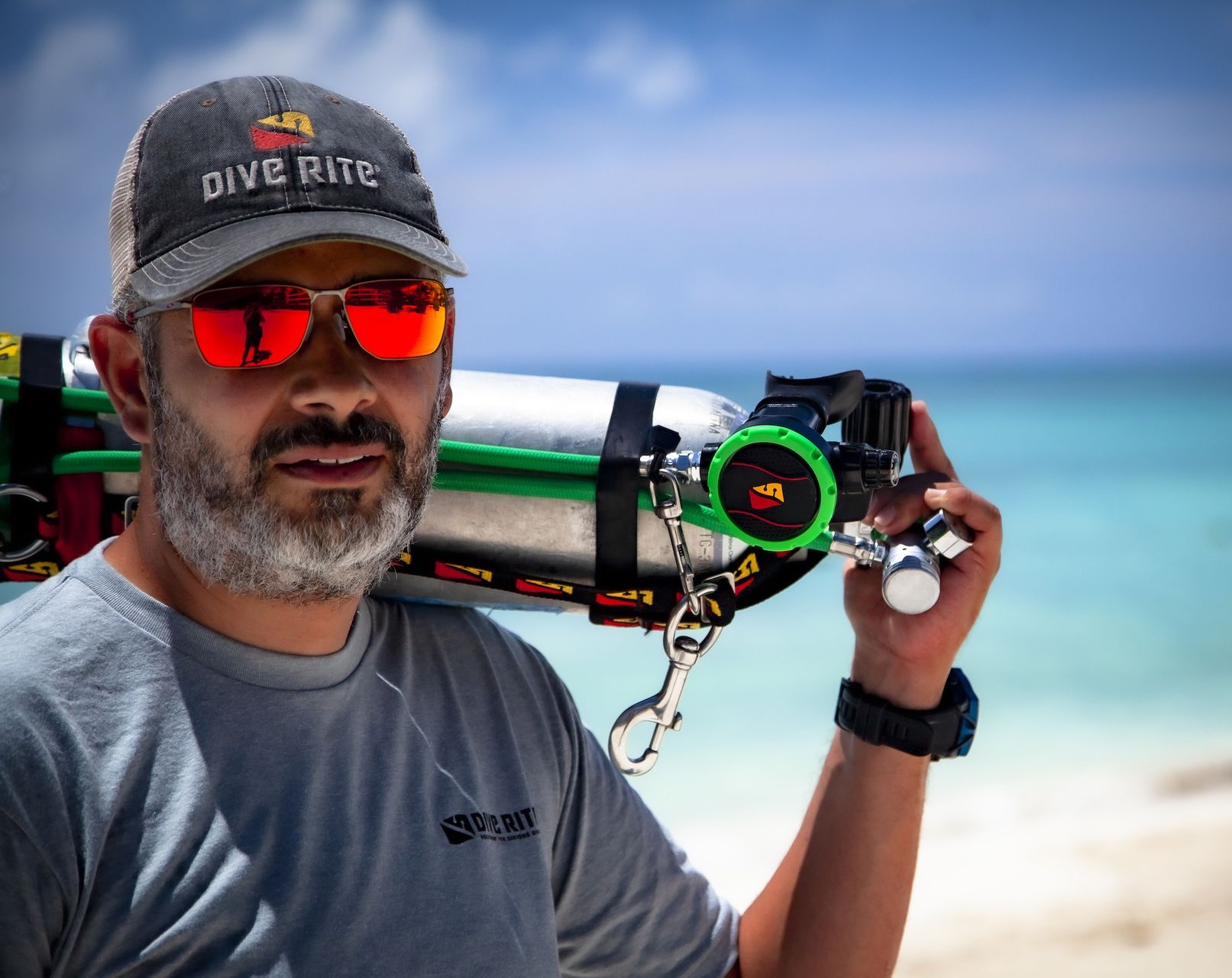
Pre-dive drills
- Selection and preparation of equipment.
- Conduct team oriented skills (buddy checks) for lift bag deployment.
- Gas matching among buddy teams
- Demonstrate familiarity with basic hand signals.
- Demonstrate adequate pre-dive planning, with limits based on the team and personal gas consumption.

Water skills
- Demonstrate various propulsion techniques: frog kick, modified frog kick, modified flutter kick, backwards kick, helicopter turns, and hand pulling if appropriate for the environment.
- Demonstrate adequate buoyancy control; ability to hover at fixed position in water column without moving hands or feet.
- Demonstrate adequate trim; ability to maintain proper position during the descent, bottom and ascent portion of the dive.
- Demonstrate the ability to perform the following exercises while maintaining trim and buoyancy in the water column:
- Unclipping and attaching sidemount cylinders..
- Perform gas switches with and without a mask.
$6,550
MXN
*Price per person
*Price per training day

Advanced Nitrox
This course examines the use of EAN-21 through 100 percent oxygen for optimal mixes to a depth of 40 meters / 130 feet. The objective of this course is to train divers in the benefits, hazards and proper procedures for utilizing EAN-21 through 100 percent oxygen for dives not requiring staged decompression.
TDI Decompression Procedures or the Intro to Tech may be combined with this course at the discretion of the instructor.
Included throughout the course:
- Private instructor.
- Classroom sessions.
- Transport to the cenotes or boat from the shop.
- Tanks and weights.
- EAN 32 fills.
- Certification card.
- Water and snacks.

Topics
- Physics.
- Pressure review - Physiology.
- Hypoxia.
- Oxygen toxicity.
- Nitrogen narcosis.
- Nitrogen absorption and elimination.
- Carbon dioxide toxicity.
- Carbon monoxide toxicity. - Formula work.
- Best mix computations
- Maximum operating depth (MOD) of mixture computations - Equipment Considerations
- Less than 40 percent oxygen content.
- More than 40 percent oxygen content. - Dive tables.
- Equivalent air depth with any table.
- Computer generated tables. - Dive computers.
- Mix adjustable.
- Oxygen (O₂ )integrated. - Dive planning.
- Operation planning.
- Gas requirements.
- Oxygen limitations.
- Nitrogen limitations. - Common Mixing Procedures (instructor to demonstrate one method)
- Partial pressure blending.
- Continuous blending.
- Membrane separation system. - Decompression.
- Enriched air nitrox (EAN) usage as a decompression gas i.e. 50/50, 80/20 etc.
- Oxygen (O₂) for decompression.
- Advantages / disadvantages of multiple gas switches.

Land drills
- Review of nitrox skills.
- Demonstrate correct use of oxygen analyzer, including optimal procedure for calibration.
- Demonstrate adequate pre-dive planning.
- Limits based on personal gas consumption.
- Limits based on oxygen exposures at planned depth with actual mix.
- Limits based on nitrogen absorption at planned depth with actual mix.
- Calculate and log CNS loading for each dive, including cumulative exposure where appropriate.
- Demonstrate understanding of gas labeling in accordance with local practices and/or regulations.
- Demonstrate adherence to conventions regarding prep of equipment for oxygen (O₂) service.
- Program nitrox computer with appropriate oxygen percentage if used.
- Properly execute the planned dive within all predetermined limits.

Pre-dive and water skills
- Use START before every dive *START is an acronym for S-drill (Out of Gas drill and Bubble Check), Team (buddy equipment checks), Air (gas matching), Route (entry/exit and planned path underwater, Tables (depth, duration, waypoints and schedule).
- Stress analysis and mitigation
- Demonstrate various propulsion techniques: frog kick, modified frog kick, modified flutter kick, backwards kick, helicopter turns, and hand pulling if appropriate for the environment.
- Demonstrate adequate buoyancy control; ability to hover at fixed position in water column without moving hands or feet.
- Demonstrate adequate trim; ability to maintain proper position during the descent, bottom and ascent portion of the dive.
- Demonstrate the ability to perform the following exercises while maintaining trim and buoyancy in the water column:
- Unclipping and attaching sidemount cylinders.
- Perform gas switches with and without a mask.
$6,550
MXN
*Price per person
*Price per training day

Deco Procedures
This course examines the theory, methods and procedures of planned stage decompression diving. This program is designed as a stand-alone course or it may be taught in conjunction with TDI Advanced Nitrox, Advanced Wreck, or Full Cave Course. The objective of this course is to train divers how to plan and conduct a standard staged decompression dive not exceeding a maximum depth of 45 metres / 150 feet.
The most common equipment requirements, equipment set-up and decompression techniques are presented. Students are permitted to utilize enriched air nitrox (EAN) mixes or oxygen for decompression, provided the gas mix is within their current certification level.
Included throughout the course:
- Private instructor.
- Classroom sessions.
- Transport to the cenotes or boat from the shop.
- Tanks and weights.
- EAN 32 fills.
- Certification card.
- Water and snacks.
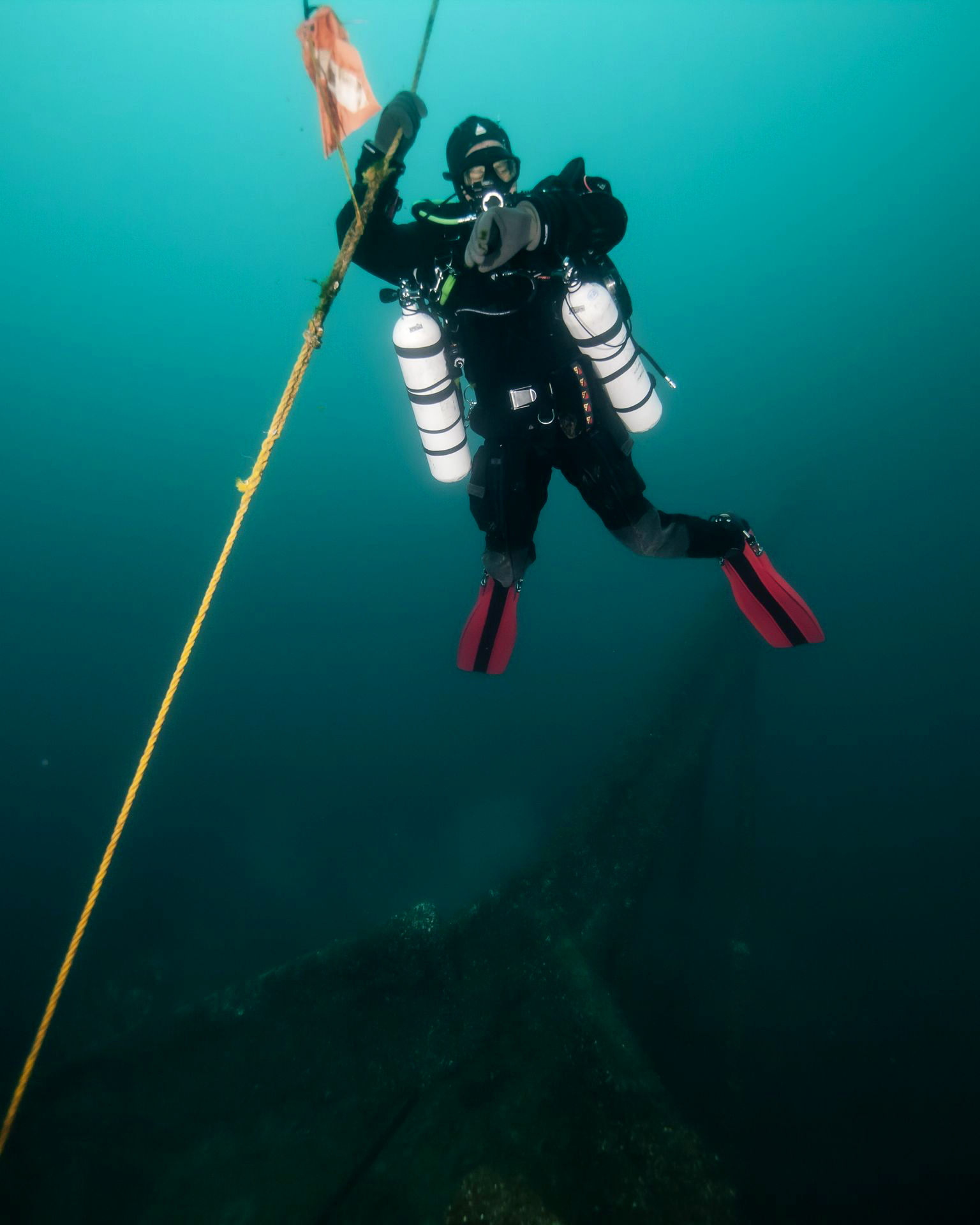
Topics
- Overview of Decompression Safety Stops Compared to Required Stops.
- Physics.
- Physiology.
- Mechanics of bubble formation.
- Advantages of hyperoxic mixes for decompression.
- Nitrogen absorption and elimination.
- Carbon dioxide toxicity.
- Ascent / Descent rates.
- Hyperthermia.
- Hypothermia.
- Psychological aspects - Decompression Options.
- Air.
- Nitrox.
- Oxygen. - Equipment Considerations.
- Dive Tables vs. Computers
- Introduction and review of different models (Bühlmann, DCIEM, US Navy, etc.)
-Proper use of electronic multi-level dive computers for dive planning and decompression. - Dive planning.
- Standard operation.
- Emergency planning. - Procedures.
- Primary and decompression gas.
- Descent.
- Ascent.
- Fixed or drifting decompression methods
- Support.
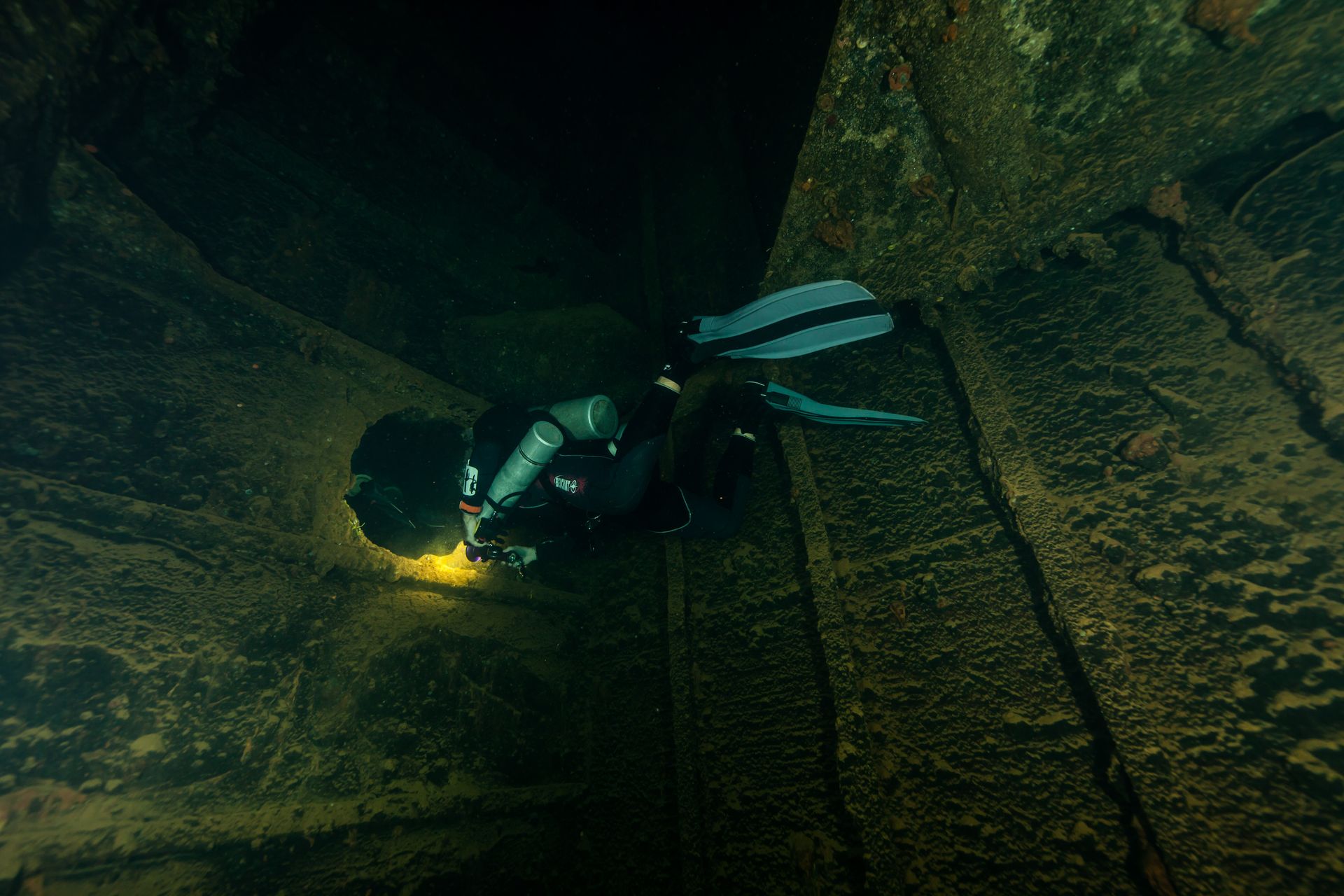
Land drills
- Selection and preparation of equipment suitable for soft overhead environment.
- Conduct team oriented drills, buddy checks, for lift bag deployment.
- Conduct team oriented drills, buddy checks, for gas switching procedures.
- Gas matching among buddy team.
- Demonstrate familiarity with basic hand signals.
- Demonstrate adequate pre-dive planning.
- Limits based on personal and team gas consumption.
- Exact dive and decompression profile.

Water skills
- Use START* before every dive.
- Stress analysis and mitigation
- Demonstrate buoyancy control; ability to hover at fixed position in water column without moving hands or feet.
- Show good awareness of buddy and other team members through communications, proximity and team oriented dive practices.
- Demonstrate comfort swimming on surface and at depth carrying single decompression stage cylinder.
- Demonstrate ability to drop and retrieve single decompression cylinder while maintaining position in the water column.
- Demonstrate ability to deploy a lift bag solo and as member of team.
- Demonstrate controlled / staged ascent on lift bag / emergency ascent line (lost a scent line).
- Remove and replace mask (deploy backup mask).
- Demonstrate appropriate reaction to gas hemorrhage from manifold or first stage, SPG and primary regulator.
- React to BCD inflator malfunction; disconnect LP hose, dump gas and orally inflate BCD/Wing to neutral buoyancy.
- Demonstrate ability to confirm gas switch(es) at depth with buddy/team members.
- Buddy breathing decompression gas for at least 1 minute.
- Demonstrate appropriate reaction to simulated free-flowing decompression regulator.
- Demonstrate appropriate modifications to deco schedule in decompression emergency (over time, over depth) (to be simulated).
- Demonstrate tired diver tow at depth and on surface, 30 meters / 100 feet lateral each.
- Complete a horizontal breath hold swim at depth for 15 meters / 45 feet.
- Properly execute the planned dive within all pre-determined limits.
- Contingency situations and problem-solving, as appropriate by instructor.
- A safety stop of at least 3 minutes shall be conducted on all no-decompression dives and proper staged decompression stops whenever and wherever mandated.
- Demonstrate (simulated) emergency gas sharing at a stationary depth not to exceed 30 metres / 100 feet.
- Demonstrate emergency deployment of a backup regulator or bail-out scuba system containing bottom mix at a depth not exceeding 30 metres / 100 feet
- Demonstrate the proper deployment, management and use of the bottom mix, decompression mix and travel mix, if used.
$6,550
MXN
*Price per person
*Price per training day

Helitrox
The Helitrox course examines the theory, methods and procedures for planned stage decompression diving utilizing Helium in the breathing mixture. This program is designed as a stand-alone course or it may be taught in conjunction with TDI Advanced Nitrox at the discretion of the instructor. The objective of this course is to train divers how to plan and conduct a standard staged decompression dive not exceeding a maximum depth of 45 meters / 150 feet.
The most common equipment requirements, gear set-up, and decompression techniques are presented. Students are permitted to utilize Enriched Air Nitrox and Helium mixes with no greater than 35% He content, and up to 100% oxygen for decompression diving provided the gas mix is within their current certification level. Breathing gas mixtures containing more than 35% Helium (+/-5%) or less than 21% oxygen are not permitted (+/- 1%).
Included throughout the course:
- Private instructor.
- Classroom sessions.
- Transport to the cenotes or boat from the shop.
- Tanks and weights.
- EAN 32 fills.
- Certification card.
- Water and snacks.
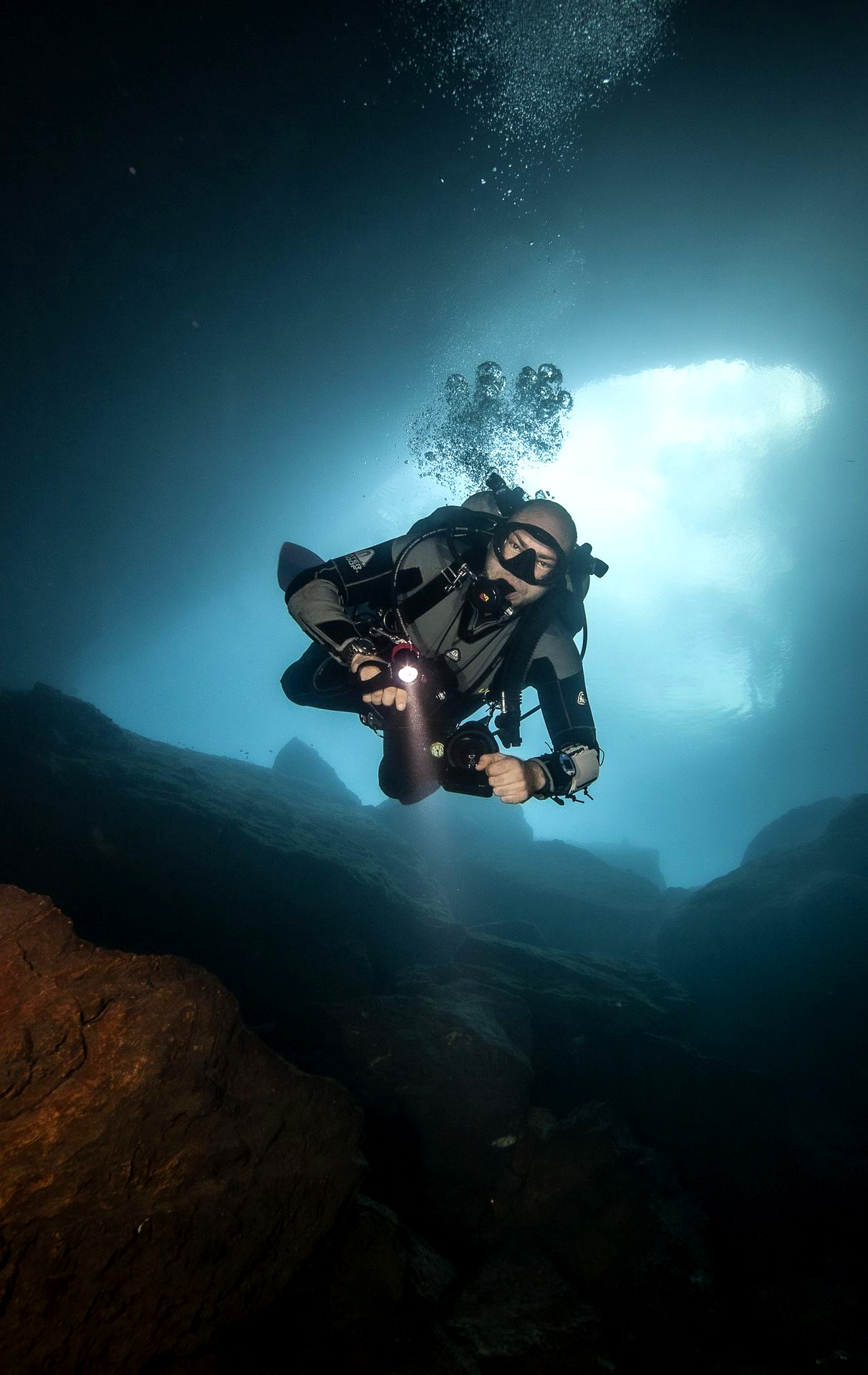
Topics
- Overview of Decompression Safety Stops Compared to Required Stops.
- Physics.
- Pressure review. - Physiology
- Mechanics of bubble formation.
- Advantages of hyperoxic mixes for decompression.
- Advantages of helium mixes for bottom gas.
- Hypoxia.
- Oxygen toxicity
- Nitrogen Narcosis.
- Nitrogen and helium; absorption and elimination.
- Carbon dioxide toxicity.
- Carbon monoxide toxicity.
- Helium.
- Counter diffusion.
- Hyperthermia.
- Hypothermia.
- Ascent / Descent rates.
- Psychological aspects - Decompression Options.
- Air.
- Nitrox.
- Oxygen. - Equipment Considerations.
- Dive Tables vs. Computers
- Introduction and review of different models (Bühlmann, DCIEM, US Navy, etc.)
-Proper use of electronic multi-level dive computers for dive planning and decompression. - Dive planning.
- Standard operation.
- Emergency planning. - Procedures
- Primary and decompression gas.
- Descent.
- Ascent.
- Fixed or drifting decompression methods. - Support.
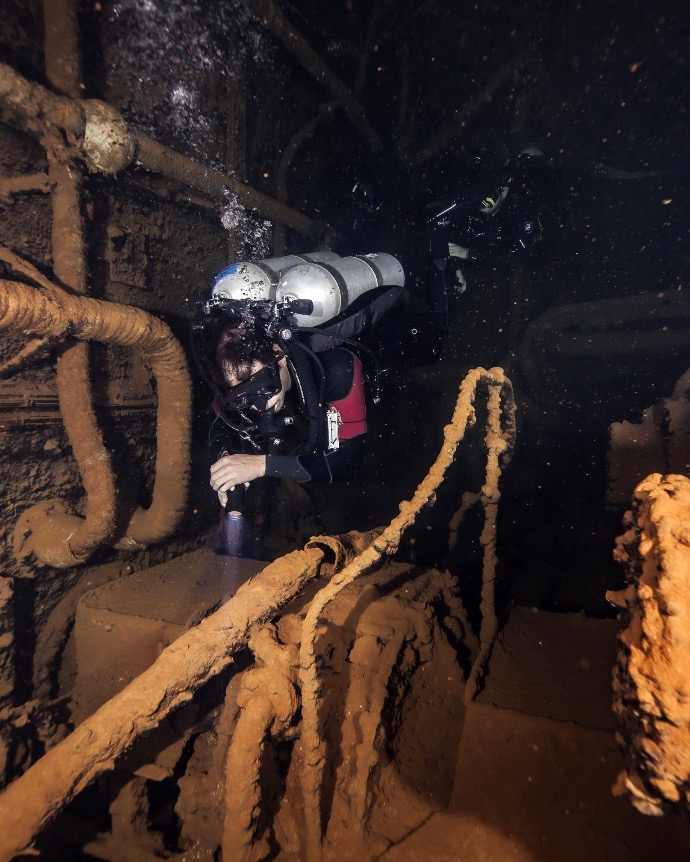
Land drills
- Selection and preparation of equipment suitable for soft overhead environment.
- Conduct team oriented drills, buddy checks, for lift bag deployment.
- Conduct team oriented drills, buddy checks, for gas switching procedures.
- Gas matching among buddy team.
- Demonstrate familiarity with basic hand signals.
- Demonstrate adequate pre-dive planning.
- Limits based on personal and team gas consumption.
- Exact dive and decompression profile.

Pre-dive drills and water skills
- Use START* before every dive.
- Stress analysis and mitigation
- Demonstrate buoyancy control; ability to hover at fixed position in water column without moving hands or feet.
- Show good awareness of buddy and other team members through communications, proximity and team oriented dive practices.
- Demonstrate comfort swimming on surface and at depth carrying single decompression stage cylinder.
- Demonstrate ability to drop and retrieve single decompression cylinder while maintaining position in the water column.
- Demonstrate ability to deploy a lift bag solo and as member of team.
- Demonstrate controlled / staged ascent on lift bag / emergency ascent line (lost a scent line).
- Remove and replace mask (deploy backup mask).
- Demonstrate appropriate reaction to gas hemorrhage from manifold or first stage, SPG and primary regulator.
- React to BCD inflator malfunction; disconnect LP hose, dump gas and orally inflate BCD/Wing to neutral buoyancy.
- Demonstrate ability to confirm gas switch(es) at depth with buddy/team members.
- Buddy breathing decompression gas for at least 1 minute.
- Demonstrate appropriate reaction to simulated free-flowing decompression regulator.
- Demonstrate appropriate modifications to deco schedule in decompression emergency (over time, over depth) (to be simulated).
- Demonstrate tired diver tow at depth and on surface, 30 meters / 100 feet lateral each.
- Complete a horizontal breath hold swim at depth for 15 meters / 45 feet.
- Properly execute the planned dive within all pre-determined limits.
$6,550
MXN
*Price per person
*Price per training day
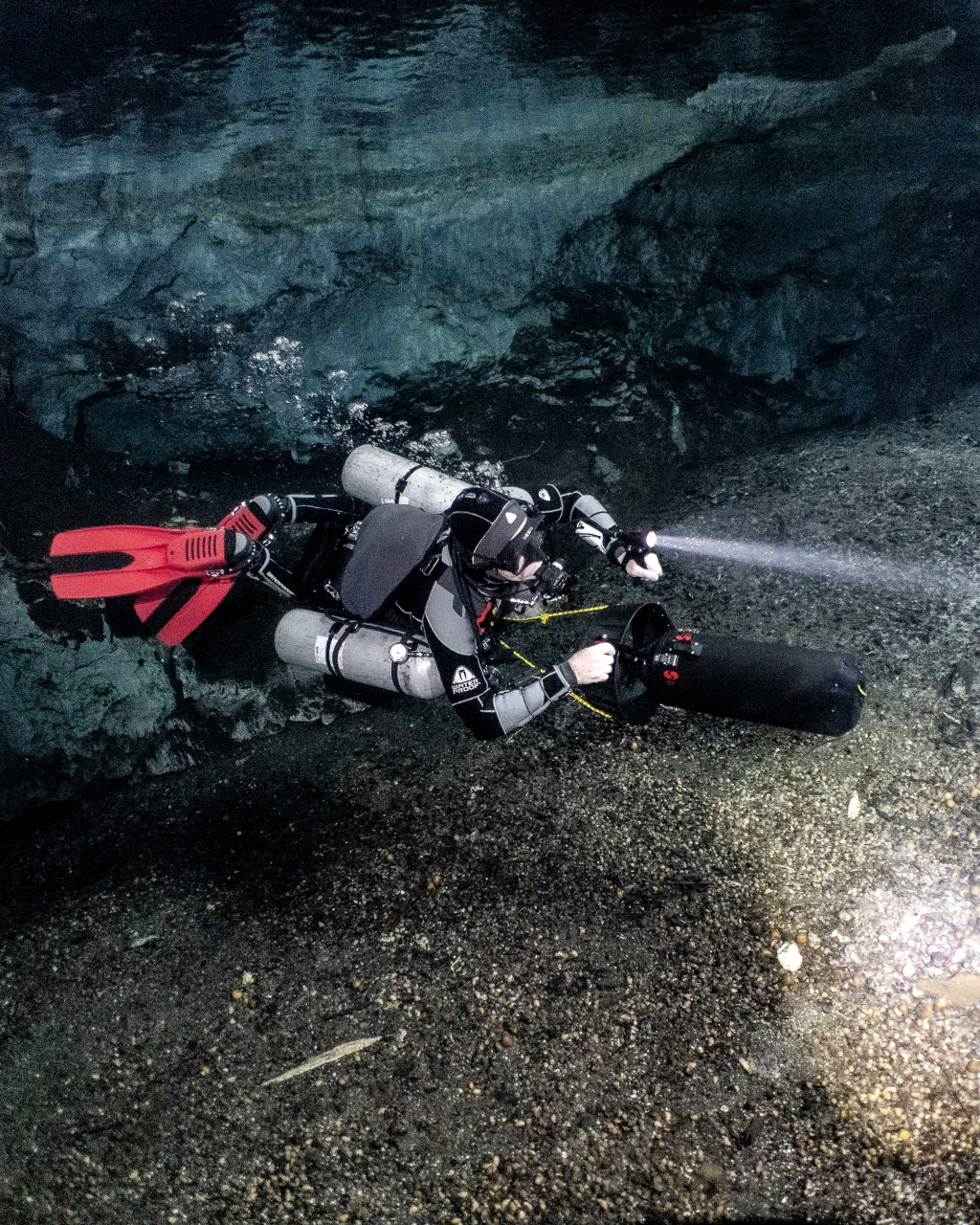
Open Water DPV Diver
The purpose of the TDI Diver Propulsion Vehicle (DPV) course is to familiarize divers with the skills, knowledge, planning, organization, procedures, techniques, problems, and hazards of using DPVS.
Upon completing the TDI Diver Propulsion Vehicle course, the student should be able to: demonstrate comprehension of the practical knowledge necessary for technical DPV diving, properly plan and safely conduct technical DPV dives, and implement techniques and procedures to manage and minimize technical DPV diving hazards.
Included throughout the course:
- Private instructor.
- Classroom sessions.
- Transport to the cenotes or boat from the shop.
- Tanks and weights.
- EAN 32 fills.
- Certification card.
- Water and snacks.

Topics
- Motivations for DPV diving.
- Advantages of DPV.
- Equipment considerations.
- DPV options.
- DPV components.
- Rated burn time.
- Care and maintenance.
- DPV rigging. - Problem-solving procedures.
- DPV malfunction or failure.
- Towing.
- Gas sharing with DPVs.
- Entanglement.
- Collision avoidance.
- Team separation. - Environmental considerations.
- Appropriate vs. inappropriate dive locations.
- Suitable environmental conditions.
- Low impact DPV use. - TDPV diving techniques.
- Buoyancy and trim with DPV.
- Instigating directional and depth changes.
- DPV “parking”.
-DPV courtesy and etiquette. - Dive planning and gas management.
- Turn time, turn distance, and turn pressure.
- Gas mix(es) and NDLs or decompression obligations

Land drills
- Demonstrate adequate pre-dive planning.
- Equipment check and equipment matching.
- Bubble check.
- Demonstrate specialized propulsion techniques in varying types of flow.
- Demonstrate proper buoyancy control.
- Demonstrate proper body posture.
- Demonstrate proper stress analysis (detection and management).
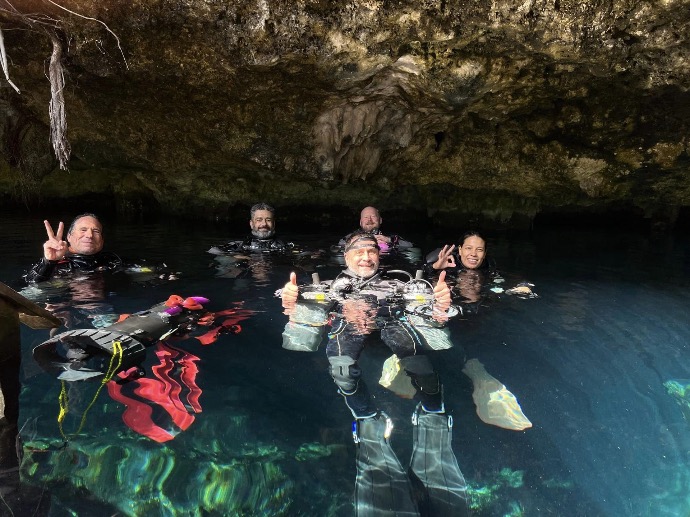
Water skills
- Proper use of DPV2.
- Gas sharing ascent with DPVs clipped off.
- Ascent with a disabled DPV.
- Tow a team member and his disabled DPV.
$6,550
MXN
*Price per person
*Price per training day

Trimix Diver
The TDI Trimix course provides the training required to competently and safely utilize breathing gases containing helium for dives that require staged decompression, utilizing nitrox and / or oxygen mixtures during decompression to a maximum depth of 60 metres / 200 feet.
The objective of this course is to train divers in the benefits, hazards and proper procedures of utilizing custom oxygen / helium / nitrogen mixtures as breathing gases. Gas mixes are not to have any less than 18 percent oxygen (O₂).
Included throughout the course:
- Private instructor.
- Classroom sessions.
- Transport to the cenotes or boat from the shop.
- Tanks and weights.
- EAN 32 fills.
- Certification card.
- Water and snacks.

Topics
- Physics.
- Pressure review. - Physiology
- Hypoxia.
- Oxygen toxicity
- Nitrogen Narcosis.
- Nitrogen and Helium; Absorption and Elimination
- Carbon Dioxide Toxicity.
- Carbon Monoxide Toxicity.
- Helium.
- Counter diffusion.
- Hyperthermia.
- Hypothermia. - Decompression Options
- Aire.
- Nitrox.
- Helio. - Equipment considerations.
- Dive Tables vs. Computers.
- Computer generated tables.
- DCIEM Heliox Tables or other published tables. - Dive Planning
- Operational planning.
- Team planning.
- Emergency planning. - Procedures
- Bottom, travel and decompression gas.
- Normal operations.
- Failure, loss or inadequate emergency procedures.
- Analysis and logging.
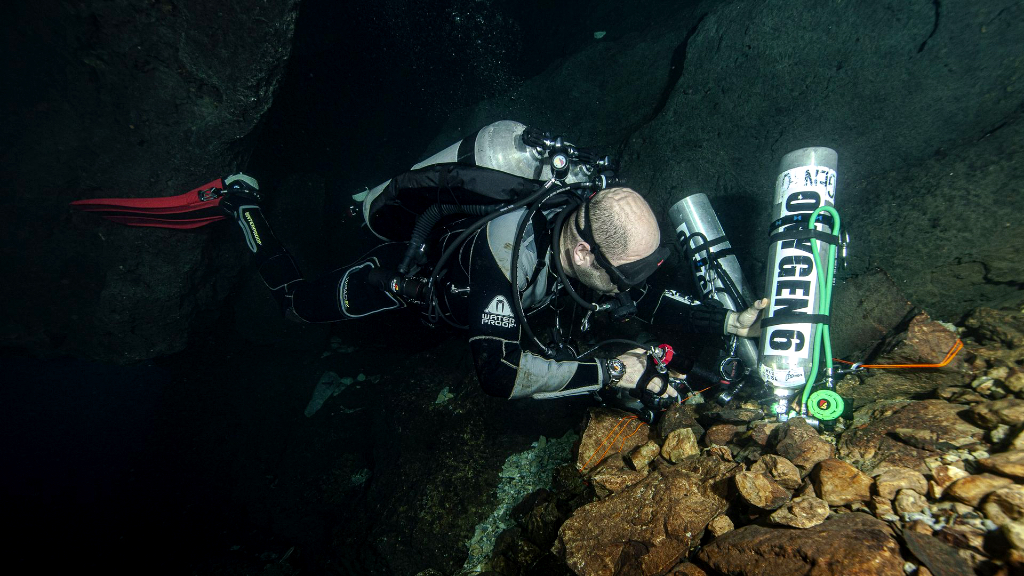
Land drills
- Demonstrate familiarity with basic and intermediate hand signals.
- Select and prepare equipment suitable for soft overhead environment with long decompression obligations.
- Conduct team oriented drills for lift bag deployment and gas switching procedure.
- Drills for buddy rescue.
- Properly analyze all gas mixtures to be used.
- Demonstrate adequate pre-dive planning.
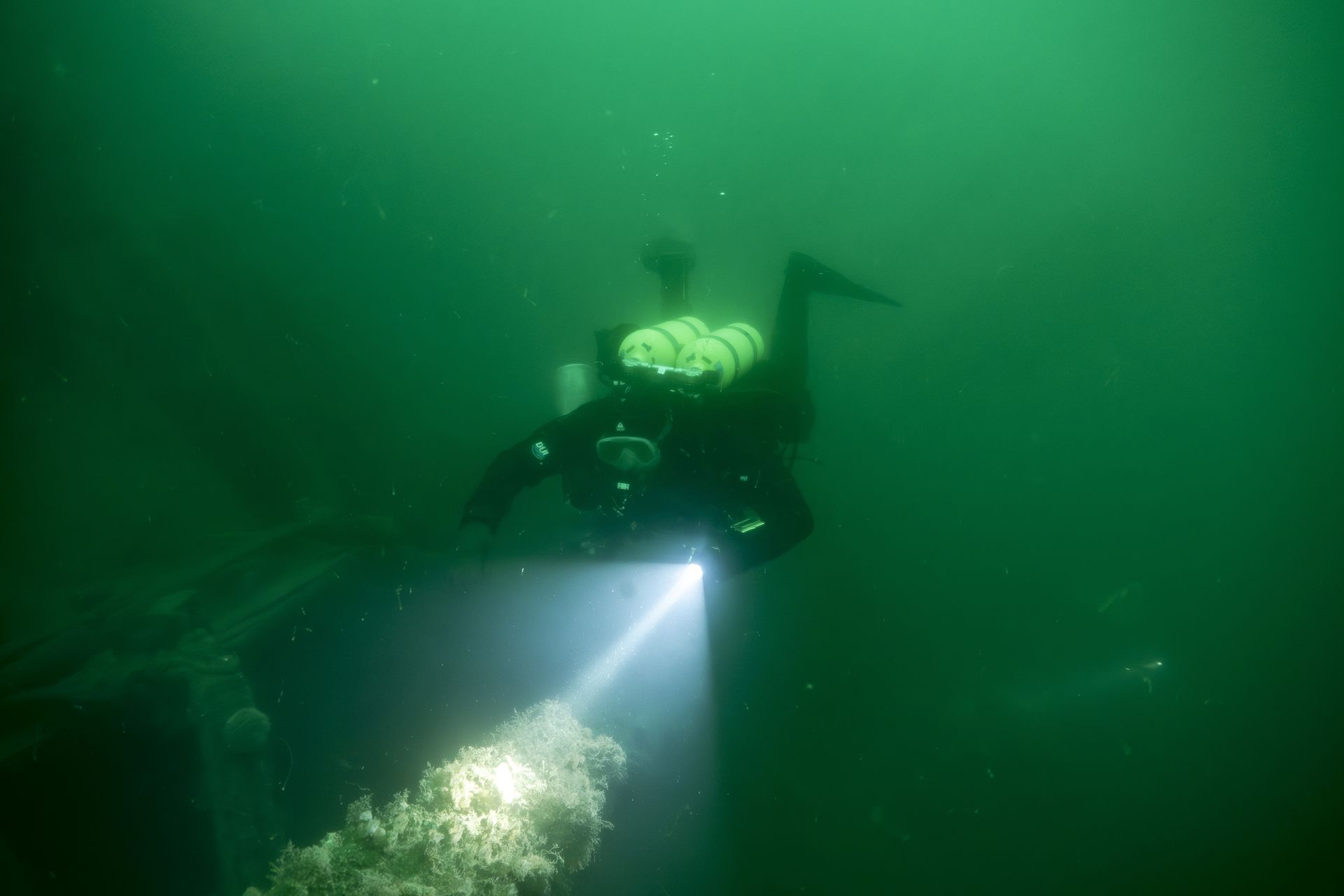
Water skills
- Use START* before every dive.
- Stress analysis and mitigation
- Show good awareness of buddy and other team members through communications, proximity and team oriented dive practices.
- Demonstrate competence managing 2 stage cylinders, either 2 deco gas or 1 deco and 1 extra bottom gas, including drop and recovery while maintaining position in the water column.
- Demonstrate ability to confirm gas switches at depth with buddy/team members.
- Demonstrate lift bag deployment from depth and use of bag as back-up buoyancy device.
- Demonstrate air-sharing ascent from depth while one member of buddy team is without mask, both as donor and recipient.
- Create contingency decompression schedule after simulated loss of decompression gas.
- Remove and replace mask, deploy back-up mask.
- Demonstrate controlled ascent with simulated toxed diver including surface tow at least 30 meters / 100 feet with equipment removal on surface, in water too deep to stand in.
- Complete a horizontal breath-hold swim at depth for 15 meters / 50 feet with mask off or blacked out.
- Properly execute the planned dive within all pre-determined limits.
- Demonstrate the proper navigational techniques for the specific dive.
- On 2 of the dives, demonstrate an ascent with ascent reel and lift bag and perform staged decompression.
- Demonstrate the proper procedures for switching and isolating a malfunctioning primary regulator This exercise should not be practiced deeper than 40 meters / 130 feet.
- Demonstrate buoyancy control; ability to hover at fixed position in water column without moving hands or feet.
$7,550
MXN
*Price per person
*Price per training day

Advanced Trimix Diver
The TDI Advanced Trimix course provides the training required to competently and safely utilize breathing gases containing helium for dives that require staged decompression, utilizing nitrox and / or oxygen (O₂) mixtures during decompression to a maximum depth of 100 metres / 330 feet.
The objective of this course is to train divers in the benefits, hazards and proper procedures of utilizing custom oxygen / helium / nitrogen mixtures as breathing gases.
Included throughout the course:
- Private instructor.
- Classroom sessions.
- Transport to the cenotes or boat from the shop.
- Tanks and weights.
- EAN 32 fills.
- Certification card.
- Water and snacks.
Topics
- Physics.
- Pressure review. - Physiology
- Hypoxia.
- Oxygen toxicity
- Nitrogen Narcosis.
- Nitrogen and Helium; Absorption and Elimination
- Carbon Dioxide Toxicity.
- Carbon Monoxide Toxicity.
- Helium.
- Counter diffusion.
- Hyperthermia.
- Hypothermia.. - Decompression Options
- Aire.
- Nitrox.
- Helio. - Equipment considerations.
- Dive Tables vs. Computers.
- Computer generated tables.
- DCIEM Heliox Tables or other published tables. - Dive Planning
- Operational planning.
- Team planning.
- Emergency planning. - Procedures
- Bottom, travel and decompression gas.
- Normal operations.
- Failure, loss or inadequate emergency procedures.
- Analysis and logging.
Land drills
- Demonstrate familiarity with basic and intermediate hand signals.
- Selection and preparation of equipment suitable for soft overhead environment with long decompression obligations.
- Conduct team oriented drills for lift bag deployment and gas switching procedure.
- Drills for buddy rescue.
- Properly analyze all gas mixtures to be used.
Pre-dive drills and water skills
- Use START* before every dive.
- Stress analysis and mitigation
- Gas matching among buddy team.
- Demonstrate adequate pre-dive planning.
- Demonstrate buoyancy control; ability to hover at fixed position in water column without moving hands or feet.
- Show good awareness of buddy and other team members through communications, proximity and team oriented dive practices.
- Demonstrate competence managing three stage cylinders, either 3 deco gas or 2 deco and extra bottom gas, including drop and recovery while maintaining position in the water column.
- Ability to manage multiple failures in adverse conditions.
- Complete a horizontal breath-hold swim at depth for 20 meters / 66 feet with mask off or blacked out.
- Deploy lift bag while sharing air on buddy’s long hose.
- Properly execute the planned dive within all pre-determined limits.
- Demonstrate the proper navigational techniques for the specific dive.
- On 2 of the dives, demonstrate an ascent with ascent reel and lift bag and perform staged decompression.
- Demonstrate the proper procedures for switching and isolating a malfunctioning primary regulator; this exercise should not be practiced deeper than 40 meters / 130 feet
$6,550
MXN
*Price per person
*Price per training day

Tec Trimix Diver
Ready for the outer edge of technical diving? The Tec Trimix Diver course takes experienced tec divers and turns them into extreme divers who go deeper and visit pristine sites where few others will ever go. During the course, you'll make dives as deep as 90 metres/300 feet, but once you earn this tough certification, there are few limits. Your training teaches you to build experience gradually, and you do it because you've made it this far and have more exploring to do.
The Tec Trimix Diver course emphasizes mission application:
- Gas selection options, especially deco gases.
- Bubble models and deep stops.
- Using multigas trimix computers.
- Handling up to four stage/deco cylinders.
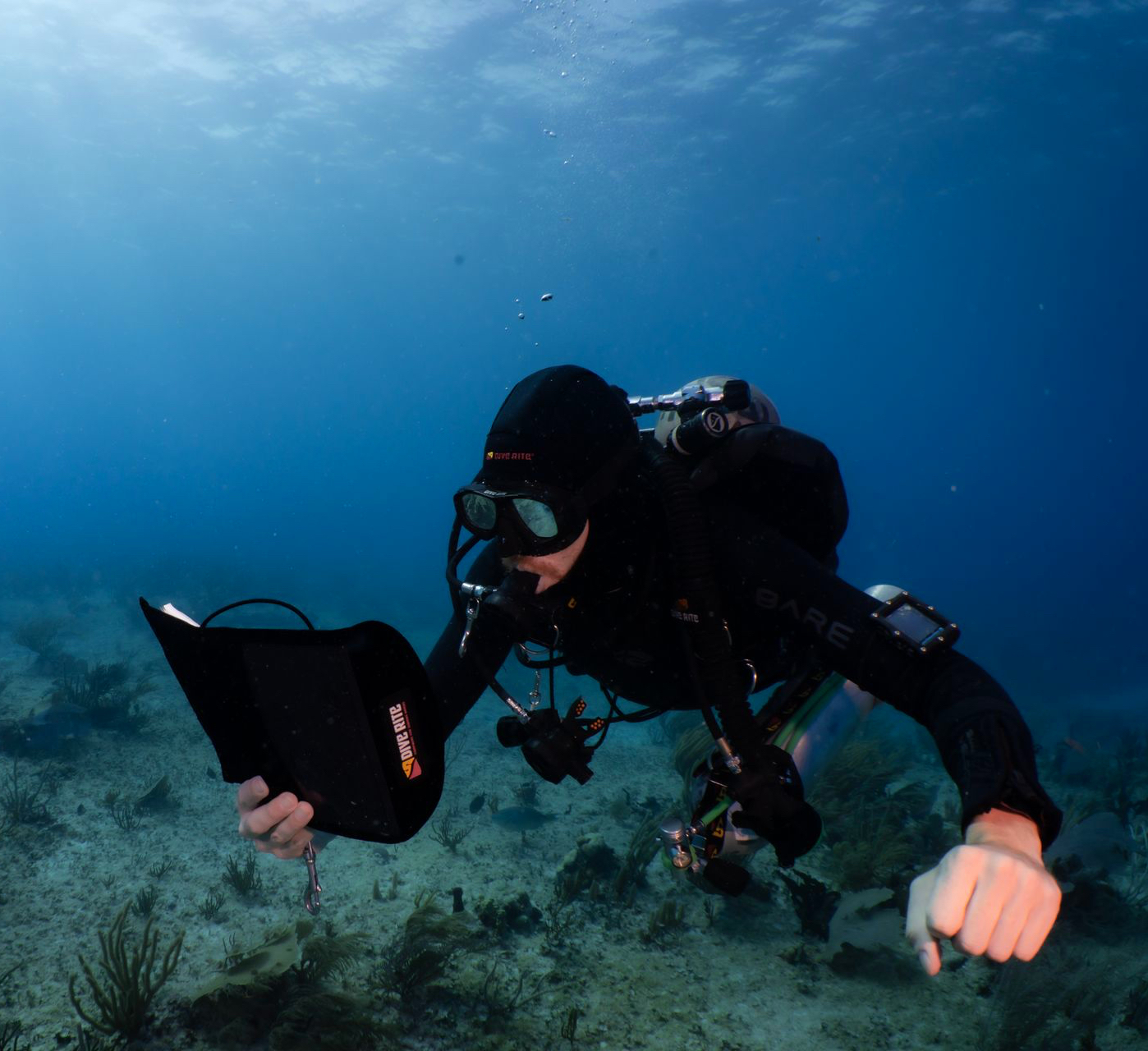
Tec 40
The PADI Tec 40 course is where you transition from recreational scuba diving to technical diving. It's a great place to start because it's the first subdivision of the full PADI Tec Diver course and bridges the gap between no stop diving and full technical deep decompression diving.
You gain experience and begin building the knowledge and skills you need to continue your tec diver training. You will qualify to make limited decompression dives to 40 metres/130 feet.
The Tec 40 course consists of three knowledge development sections, three practical application sessions and four training dives. You'll learn about:
Technical diving's risks and responsibilities.
Technical diving equipment, proper rigging and set up.
Gas planning, oxygen limits and decompression planning.
Team diving techniques and emergency procedures, such as dealing with free flows, manifold leaks and out of gas situations.

Tec 45
The PADI Tec 45 course is the second part of the full PADI Tec Deep Diver program. You'll extend your depth limit to 45 metres/145 feet and learn to plan and execute repetitive decompression dives using a single stage/decompression cylinder. It puts you in a complete tec diving rig, which can be either backmount or sidemount. You'll also make accelerated decompression dives using EANx or pure oxygen. This is a course where you'll rise to the challenge and make the commitment to become a technical diver.
Your Tec 45 training consists of three knowledge development sections, three practical application sessions and four open water dives.
Building on what you learned in the Tec 40 course, you focus on the function and maintenance of tec diving equipment and associated issues. You continue fine-tuning gas planning and calculating accelerated decompression stops. Plus, you learn to think like a technical diver.

Tec 50
The third part of the full PADI Tec Deep Diver program is Tec 50. As a Tec 50 diver, you show that you've developed competency as a tec diver and have the skills to dive to a maximum of 50 metres/165 feet. You know how to make extended, accelerated decompression stops using up to two gases. It's not easy to reach this level and earning your Tec 50 certification opens the door to deeper diving expeditions.
The Tec 50 course includes two knowledge development sections, three practical application sessions and four open water dives.
A primary focus of this course is mission planning and execution. You also learn more about handling emergencies and how to think like a technical diver.